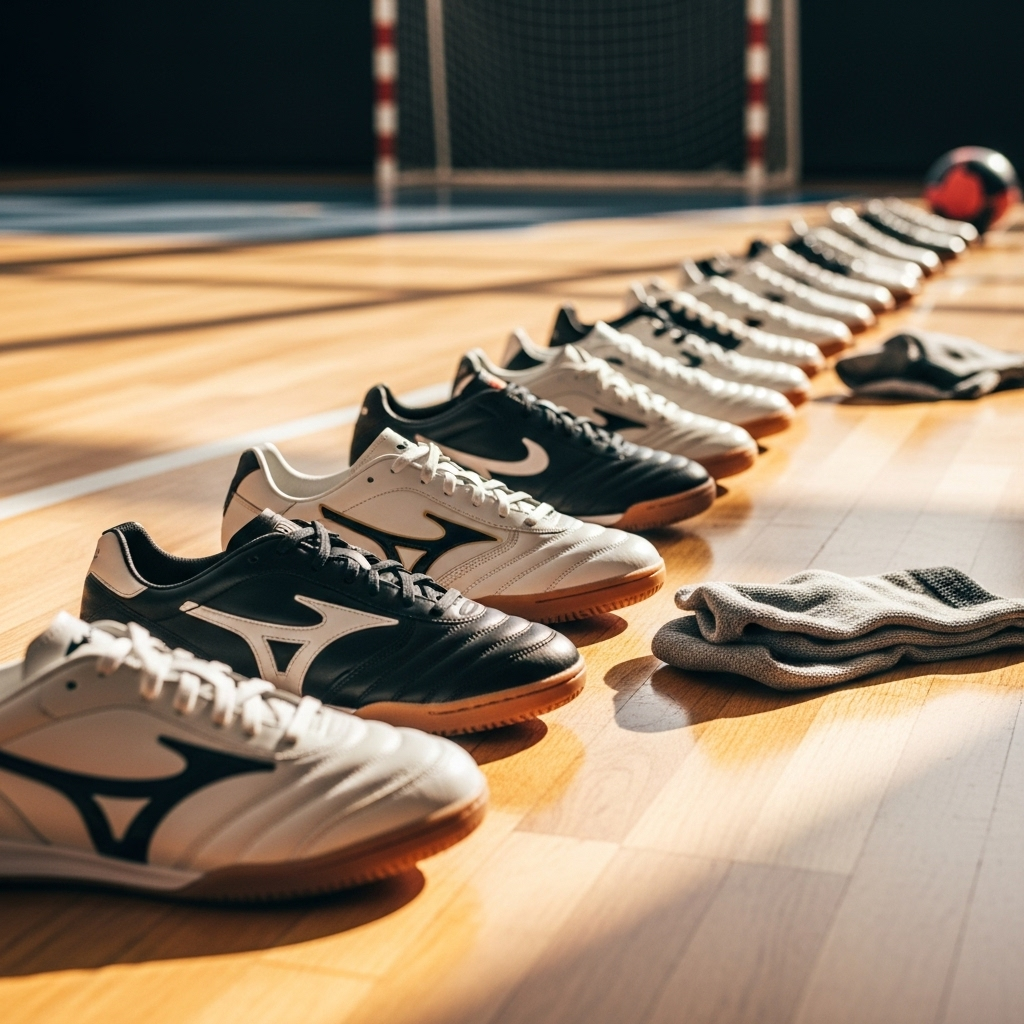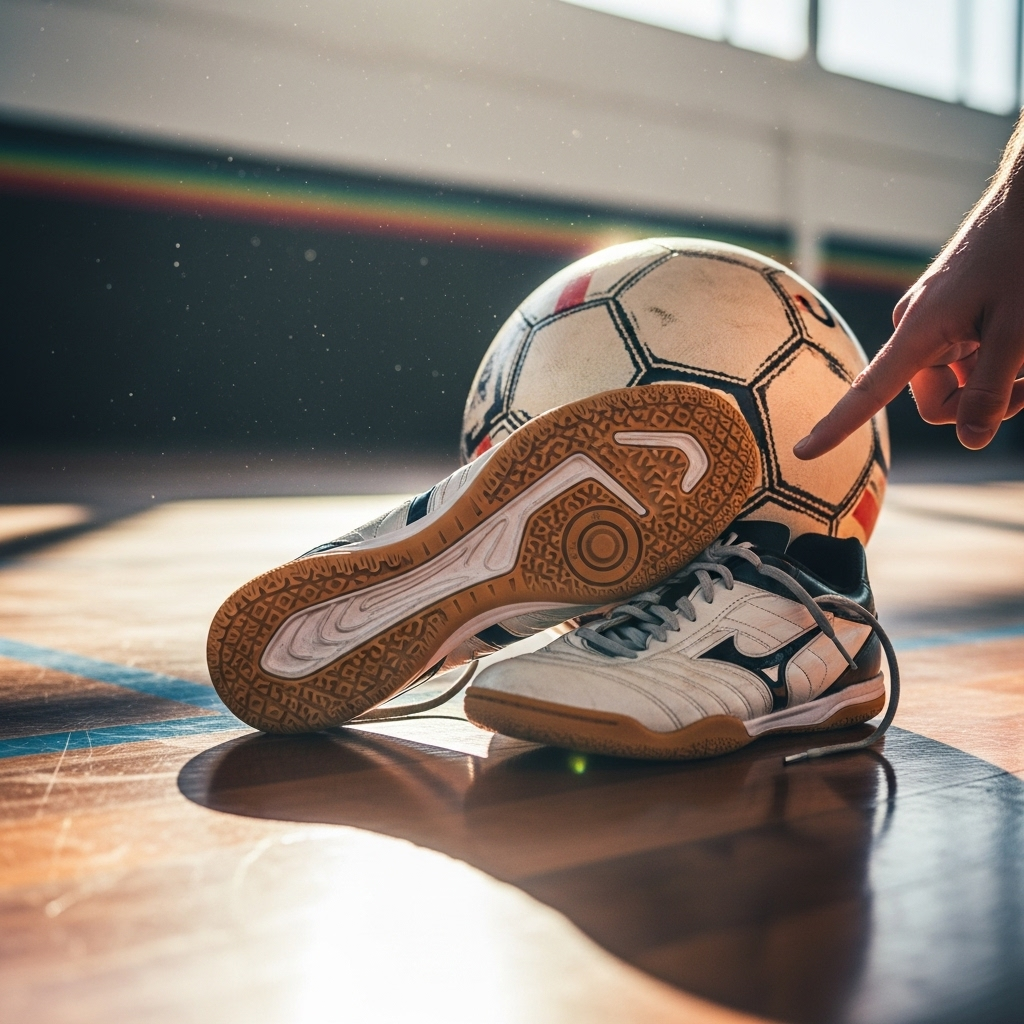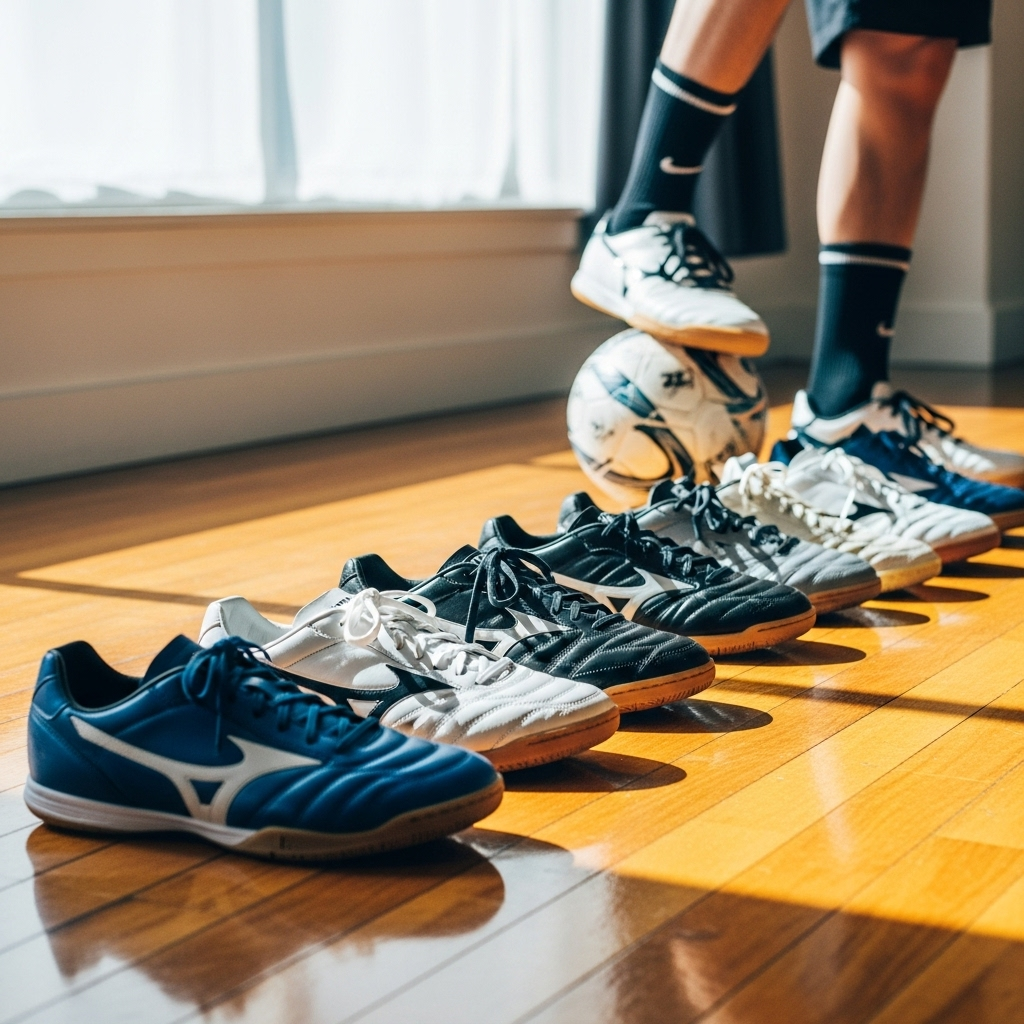For indoor soccer, wear shoes specifically designed for indoor courts. Look for flat, non-marking rubber soles with excellent grip and minimal tread. These “turf shoes” or “indoor soccer shoes” prevent slipping, protect the court surface, and offer the agility needed for fast-paced play. Avoid running shoes or cleats.
Playing indoor soccer is a blast! It’s fast-paced, exciting, and you can play it year-round, no matter the weather. But picking the right shoes can feel a bit puzzling when you’re just starting out. You might wonder, “Can I just wear my sneakers?” or “What’s the difference between indoor and outdoor soccer shoes?” It’s a common question, and getting it right makes a huge difference in your game and safety. Don’t worry, we’re here to help you navigate this! We’ll break down exactly what you need to know, step-by-step, so you can confidently choose the perfect pair. Get ready to feel more stable, agile, and ready to play your best game ever!
—
What Shoes Should I Wear For Indoor Soccer: An Essential Guide
Choosing the right footwear for indoor soccer is surprisingly important. It’s not just about comfort; it’s about performance, safety, and protecting the playing surface. Often played on hardwood, polished concrete, or synthetic indoor fields, these environments require specific shoe features that standard athletic shoes just don’t offer. Wearing the wrong shoes can lead to slips, falls, ankle injuries, and even damage to the court itself. Let’s dive into what makes a shoe ideal for indoor soccer.
Why Specific Indoor Soccer Shoes Matter
Indoor soccer courts are designed for quick turns, sudden stops, and explosive movements. The surface is usually smooth and doesn’t offer the same traction as grass. This is where specialized indoor soccer shoes shine. They are engineered to provide the right balance of grip, flexibility, and support.
Running shoes, with their thick, often deep-treaded soles, are designed for forward motion and cushioning on harder surfaces like asphalt or tracks. Their tread can pick up dust and debris from the court, reducing grip. Cleats, designed for outdoor grass fields, dig into the turf to provide traction. On a hard indoor surface, cleats can cause damage and offer very little grip, making them dangerous.
Indoor soccer shoes, on the other hand, are built with specific features to tackle these challenges.
Key Features of Indoor Soccer Shoes
When you’re shopping for indoor soccer shoes, keep an eye out for these crucial elements:
Sole Type: This is the most critical feature. Indoor soccer shoes have flat, rubber soles.
Grip and Traction: The sole pattern is designed for non-slip performance on smooth indoor surfaces.
Material: Uppers can be made from leather, synthetic leather, or mesh.
Fit: A snug, supportive fit is essential.
Weight: Lighter shoes generally allow for quicker movements.
The Sole Story: Flat, Non-Marking Rubber is King
The defining characteristic of indoor soccer shoes is their sole. You’ll typically find them described as having “flat soles” or “court soles.”
Flat Profile: This means the sole is relatively thin and has minimal cushioning compared to running shoes. The goal is to keep you low to the ground, providing better feel for the ball and stability. A flatter sole allows for more surface area contact with the court, enhancing grip.
Rubber Material: The rubber used is specifically chosen for its grippy properties and durability. It provides the necessary friction to prevent slipping during sharp cuts and quick stops.
Non-Marking: This is extremely important for indoor facilities. The rubber compound is formulated so it doesn’t leave scuff marks or black streaks on the court floor. Many indoor soccer shoes will explicitly state “non-marking” on the tag or packaging. Always check for this!
Understanding the Grip: Tread Patterns for Indoor Courts
Unlike the aggressive studs of outdoor cleats, indoor soccer shoe soles feature more subtle tread patterns.
Minimal Tread: The patterns are usually shallow and designed to maximize contact with the court. You might see herringbone patterns, small circular or rectangular lugs, or a combination.
Purpose: The goal is to offer enough grip for agility without digging into the surface or picking up excessive debris. Think controlled slippage when needed for pivots, and firm grip for acceleration.
Avoid Deep Grooves: Deep grooves, like those found on some trail running shoes or outdoor turf shoes, can trap dust and reduce the sole’s contact with the court surface.
Upper Materials: Comfort Meets Durability
The material of the shoe’s upper affects comfort, ball feel, and durability.
Leather: Traditional soccer shoes often use leather (full-grain or synthetic). Leather molds to your foot, offering excellent ball control and a comfortable feel. It can be slightly heavier and less breathable than synthetic options. Many high-quality indoor shoes still feature leather uppers for that classic feel.
Synthetic Leather: This is a popular choice, offering a good balance of durability, water resistance, and ball feel. It’s often lighter and easier to clean than natural leather.
Mesh/Knit: Modern indoor soccer shoes increasingly incorporate mesh or knit materials. These uppers are highly breathable, lightweight, and can offer a sock-like fit. They are ideal for players who prioritize agility and ventilation.
The Importance of Fit and Comfort
A well-fitting shoe is non-negotiable for any sport, and indoor soccer is no exception.
Snug but Not Tight: Your foot should feel secure in the shoe, with no excessive movement inside. However, it shouldn’t be so tight that it causes pain or numbness.
Room for Toes: There should be a small amount of space (about a finger’s width) between your longest toe and the front of the shoe to allow for foot swell and to prevent jamming your toes during stops.
Heel Lock: Your heel should stay firmly in place without slipping up and down as you move. Heel slippage can lead to blisters and instability.
Arch Support: While indoor soccer shoes are flatter than many other athletic shoes, look for some subtle arch support that matches your foot’s natural contour. If you have specific arch needs, consider aftermarket insoles.
Types of Shoes to Consider for Indoor Soccer

While the term “indoor soccer shoes” is common, you might also see them referred to by slightly different names. It’s helpful to know what these mean.
1. Indoor Soccer Shoes (ISA / IN)
These are the most common and are specifically designed for the sport.
Key Features: Flat, non-marking rubber soles; flexible construction; good ball control.
Best For: General indoor soccer play on hardwood or futsal courts.
Pros: Excellent grip, court protection, good ball feel, designed for quick movements.
Cons: May offer less cushioning than other athletic shoes, so if you have joint issues, consider adding insoles.
2. Futsal Shoes
Futsal is a variation of soccer played indoors, so futsal shoes are essentially indoor soccer shoes. The term “futsal” emphasizes the type of game they are built for.
Key Features: Virtually identical to indoor soccer shoes – flat, gum rubber soles (non-marking), lightweight, flexible.
Best For: Futsal, indoor soccer, or any sport played on polished indoor courts.
Pros: Highly specialized for indoor grip, durability, and court safety.
Cons: Similar to ISA shoes, cushioning might be minimal.
3. Turf Shoes (TF)
Turf shoes have a slightly different sole design, optimized for artificial turf fields. While they can be used on indoor courts, they are not always the ideal choice compared to dedicated indoor shoes.
Key Features: Short, rubber nubs or a grid pattern on the sole. Designed for better traction on artificial turf than cleats but less than dedicated indoor shoes on polished courts.
Best For: Artificial grass fields, but can be a substitute for indoor if your indoor shoes are unavailable or worn out.
Pros: Offer more grip than indoor shoes on slightly “stickier” indoor surfaces, more durable than indoor shoes on rougher artificial turf.
Cons: The nubs can pick up dust and debris, reducing grip on very smooth indoor courts and potentially marking the floor if the rubber isn’t non-marking. They can also be slightly hotter due to less ventilation from the sole.
Shoes to AVOID for Indoor Soccer
It’s just as important to know what not to wear. Wearing the wrong shoes can be detrimental to your game and your safety.
Outdoor Soccer Cleats: These have long studs designed to grip soft grass. On indoor courts, they offer little to no traction, can damage the floor, and are a tripping hazard.
Running Shoes: Their soles are designed for forward motion and shock absorption on harder surfaces. The tread pattern can be too aggressive for court grip and can leave marks. They also lack the lateral support needed for quick side-to-side movements in soccer.
Basketball Shoes: While they offer good court grip and ankle support, their primary design is for jumping and lateral movement in a different sport. They can feel a bit bulky and stiff for the precise ball control needed in soccer.
Cross-Trainers: These are general-purpose athletic shoes. They usually have multi-directional tread patterns that aren’t optimized for the specific grip demands of indoor soccer and may mark the court.
Comparing Indoor Soccer Shoes vs. Other Athletic Footwear
To highlight the differences, let’s look at a comparison table.
| Feature | Indoor Soccer Shoe (ISA/Futsal) | Running Shoe | Outdoor Soccer Cleat | Turf Shoe (TF) |
| :————- | :———————————————- | :——————————————— | :————————————————- | :——————————————- |
| Sole Type | Flat, rubber | Cushioned, often with deep tread | Studded (cleats) for grip | Short rubber nubs or grid pattern |
| Traction | Excellent grip on smooth indoor courts | Can slip; tread designed for running | High grip on grass; can damage/slip indoors | Good grip on artificial turf; okay indoors |
| Court Mark | Non-marking | Can leave marks | Can severely damage courts | Can leave marks if not quality non-marking |
| Flexibility| High, especially in the forefoot | Designed for forward flexibility | High, but with stud structure | Moderate to high |
| Support | Good lateral support for quick cuts | Primarily forward motion support | Lateral support, stability for field play | Moderate lateral support |
| Cushioning | Minimal to moderate | High | Moderate | Low to moderate |
| Best Use | Indoor soccer, Futsal | Running, jogging | Outdoor grass soccer | Artificial turf fields |
How to Choose Your Indoor Soccer Shoes: A Step-by-Step Guide

Ready to find the perfect pair? Follow these simple steps:
Step 1: Determine Your Playing Surface
Most indoor soccer is played on hardwood, polished concrete, or rubberized sports floors. If your league specifies a particular type of court, keep that in mind. This guide focuses on these standard indoor surfaces.
Step 2: Identify the Shoe Type
Look for shoes clearly labeled “Indoor Soccer,” “Futsal,” or “Sala.” Avoid anything labeled “FG” (Firm Ground), “SG” (Soft Ground), or “AG” (Artificial Grass) unless it’s a specific indoor variant of those. Running shoes, basketball shoes, or general trainers are not suitable.
Step 3: Check the Sole
Ensure the sole is flat and made of rubber. It should be clearly marked as “non-marking.” The tread pattern should be subtle, designed for grip on smooth surfaces without aggressive lugs.
Step 4: Consider the Upper Material
Think about your priorities:
Ball Feel & Control: Leather or high-quality synthetic leather often offer the best feel.
Breathability & Lightness: Mesh or knit uppers are excellent for keeping your feet cool and reducing weight.
Durability: Synthetic materials and well-constructed leather uppers tend to last longer.
Step 5: Try Them On (If Possible!)
This is the best way to ensure a good fit.
Wear the type of socks you’ll play in.
Stand up and walk around.
Wiggle your toes – you should have about a finger’s space.
Mimic soccer movements: quick stops, turns, and sprints. Your heel shouldn’t lift, and your foot shouldn’t slide excessively inside the shoe.
If buying online, check the return policy and consult sizing charts carefully. Reputable brands like Adidas, Nike, Puma, and Joma offer excellent indoor soccer shoe lines.
Step 6: Don’t Forget About Your Feet
Socks: Invest in good quality sports socks that wick moisture away from your skin. They provide an extra layer of comfort and help prevent blisters.
Insoles: If you have specific arch support needs or desire extra cushioning, consider purchasing aftermarket insoles designed for athletic shoes. These can be swapped into your indoor soccer shoes. For instance, Superfeet or Powerstep offer various supportive insoles.
Maintaining Your Indoor Soccer Shoes
Proper care will extend the life of your shoes and keep them performing at their best.
1. Clean After Every Use: Wipe off any dirt or dust with a soft brush or damp cloth. This is especially important for the soles to maintain grip.
2. Air Them Out: Never store your shoes in a gym bag after a game. Let them air dry naturally. Stuffing them with newspaper can help absorb moisture and maintain their shape.
3. Avoid Extreme Heat: Don’t leave your shoes in a hot car or near a direct heat source, as this can damage the adhesives and materials.
4. Wash Sparingly: If they are very dirty, you can wash them by hand with mild soap and water.
5. Check for Wear and Tear: PERIODICALLY inspect the soles for excessive wear, the stitching for any loose threads, and the uppers for damage. Replace them when they no longer provide adequate grip or support.
Buying Guide: What to Look For in Brands and Models

Many reputable sports brands manufacture excellent indoor soccer shoes. Here are a few popular choices and what makes them stand out:
Adidas: Known for their classic soccer heritage, Adidas offers a range of indoor models, often featuring lightweight designs and excellent ball touch. Look for their “Predator,” “Copa,” or “X” indoor lines. The Adidas Samba is a classic that’s often adapted for indoor play due to its flat gum sole, though it wasn’t originally designed for competitive sports.
Nike: Nike brings innovation to their indoor soccer shoes, focusing on agility and responsiveness. Their “Tiempo” and “Phantom” series often have indoor variants.
Puma: Puma shoes are recognized for their style and performance, often offering a good blend of comfort and speed. The “Future” and “Ultra” indoor models are popular.
Joma: A Spanish brand with a strong focus on indoor sports, Joma offers durable and high-performance futsal shoes that are often more budget-friendly but still excellent quality. Their “Top Flex” line is a long-standing favorite.
Mizuno: While more known for volleyball, Mizuno also produces high-quality indoor court shoes that can work well for futsal and indoor soccer, emphasizing stability and cushioning.
When choosing a model, read reviews from other players if possible. Pay attention to feedback on fit, grip, durability, and comfort. It’s often a good idea to check resources like Soccer.com or Zappos for a wide selection and customer reviews.
—
Frequently Asked Questions About Indoor Soccer Shoes
Here are answers to some common questions beginners might have about choosing the right footwear.
Q1: Can I wear my regular sneakers for indoor soccer?
A1: It’s not recommended. Regular sneakers, especially running shoes, have thick soles with aggressive tread that can cause you to slip, leave marks on the court, and don’t offer the lateral support needed for quick soccer movements. Specialized indoor soccer shoes provide the necessary grip, flexibility, and court-friendly design.
Q2: What’s the difference between indoor soccer turf shoes and indoor court shoes?
A2: “Indoor court shoes” (or Futsal/ISA shoes) have flat, non-marking rubber soles for polished hardwood or synthetic indoor courts. “Turf shoes” have short rubber nubs designed for artificial grass fields. While turf shoes can* be used indoors, their nubs might not provide optimal grip on very smooth surfaces and could potentially mark the court if the rubber isn’t suited for it. Flat-soled indoor shoes are usually preferred for most indoor soccer courts.
Q3: Do I need to buy expensive indoor soccer shoes?
A3: Not necessarily! While high-end shoes offer advanced materials and technology, you can find excellent, durable, and performance-ready indoor soccer shoes at various price points. Brands like Joma often provide great value. Prioritize finding shoes with the correct sole type (flat, rubber, non-marking) and a comfortable fit above all else.
Q4: How do I know if my shoes are “non-marking”?
A4: Most shoes designed for indoor courts will explicitly state “non-marking” on the label, box, or product description. If it’s unclear, look at the rubber on the sole. If it’s a natural gum color or a light brown, it’s usually non-marking. Very dark or black rubber compounds are more likely to leave marks. When in doubt, ask the retailer or check the manufacturer’s website.
**Q5: Can

